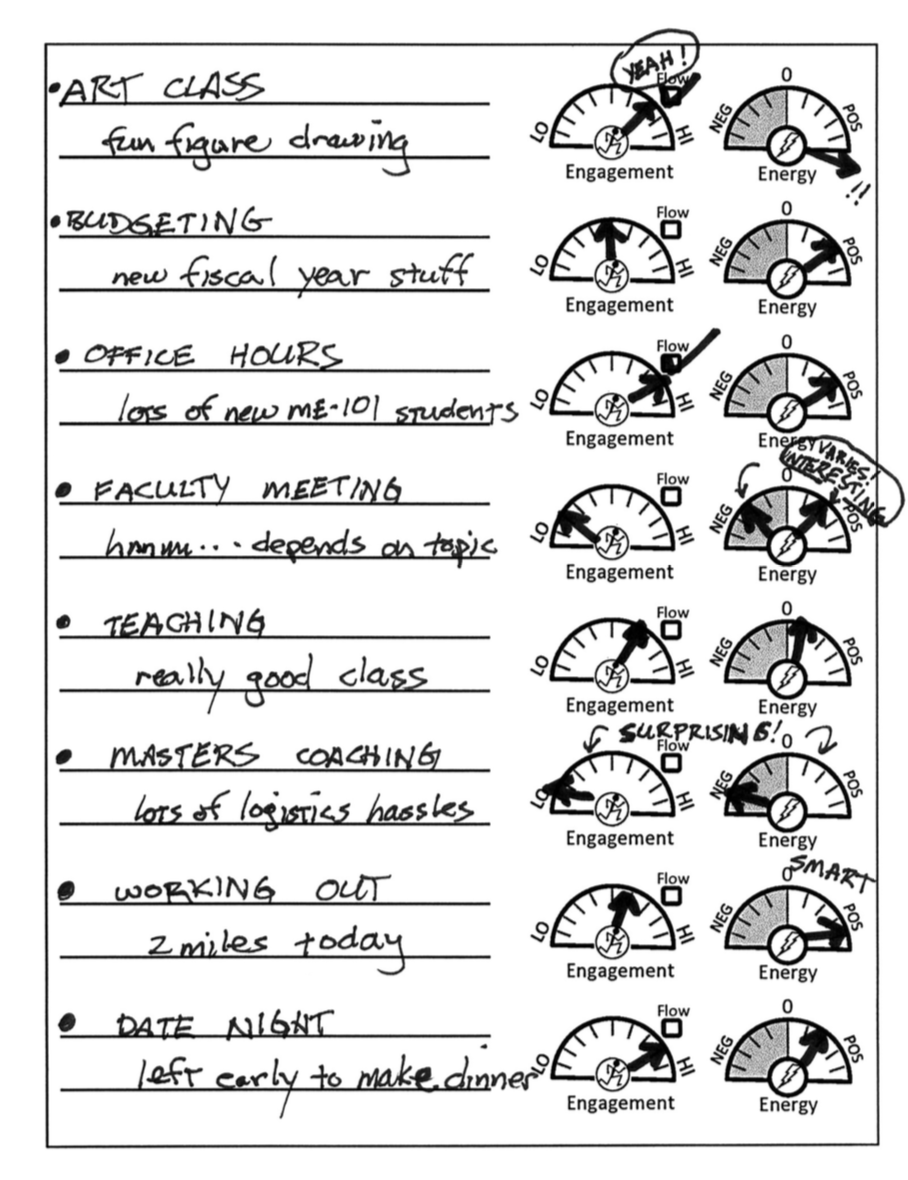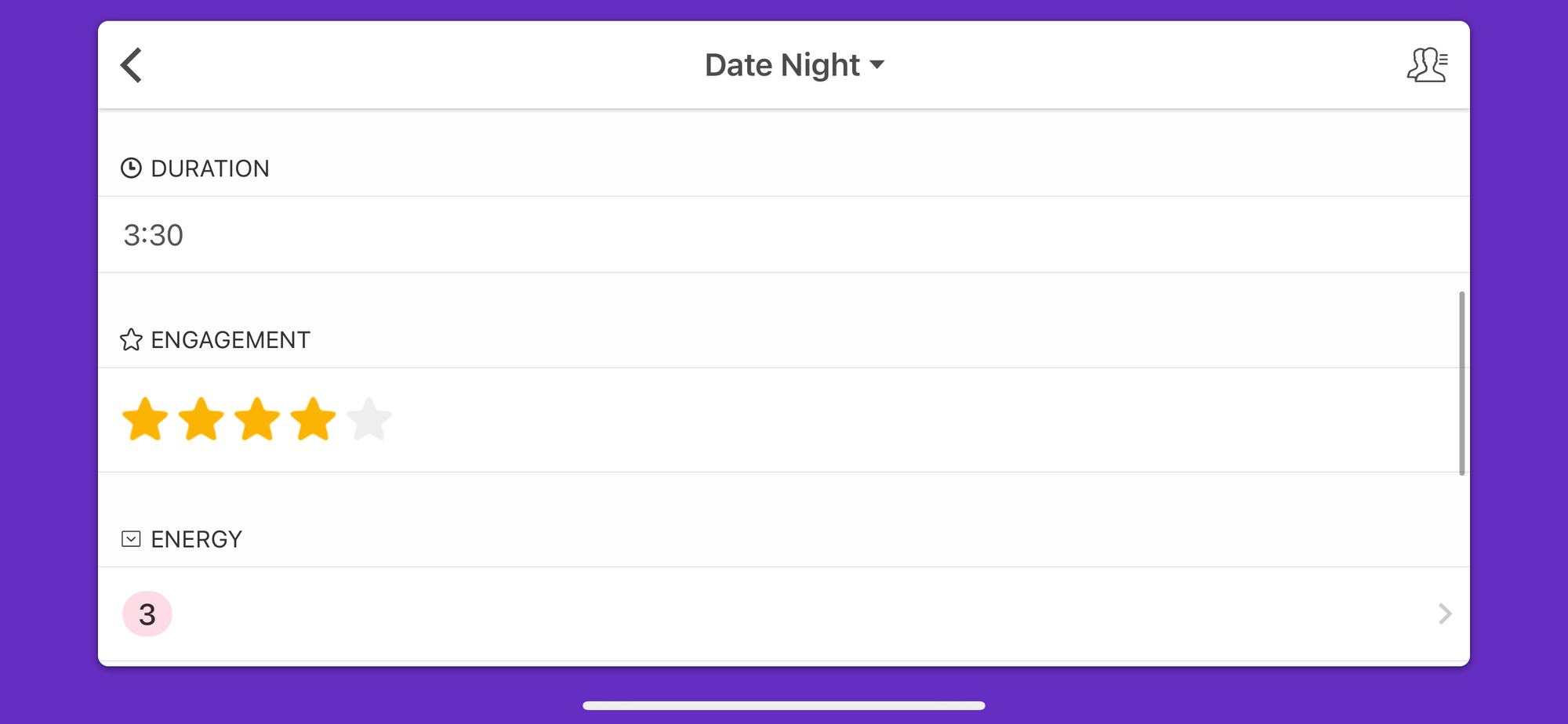We often hear that time is our most valuable resource, but what if it’s really our energy that drives everything?
In this week’s episode and guide, I explore how managing your energy—not just your time—can help you design a more sustainable, balanced life and business.
Energy isn’t just something you feel; it’s something you can measure and track to make better decisions about where you invest your efforts.
Make sure to check out the InnovatorOS Activity Flow Journal guide and template to track and leverage insights about your energy! More information below on the basics of this tool.
Podcast
To get the full context of the topic, listen to the latest episode of the Everyday Innovation podcast.
As you listen, feel free to follow along and add to the experience with additional resources below.
Spotify
Don't see a Spotify embed above? Click here to watch/listen!
YouTube
Apple
Don't see an Apple embed above? Click here to listen!
Key Takeaways from the Episode
• Energy enhances time management: While time is valuable, understanding where your energy goes allows you to manage it more effectively and create a schedule that works in harmony with your natural rhythms. This shift in focus leads to more sustainable and impactful results.
• Not all energy is created equal: Activities that feel rewarding in the short term may drain you in the long run, while tasks that seem challenging at first can provide lasting energy and fulfillment. It’s essential to recognize these patterns in your daily life.
• Simple energy boosts can transform your day: Incorporating movement, creative breaks, or changing your environment can reset your energy and keep you engaged without the need for quick fixes like caffeine. These small shifts make a big difference in how you show up for your tasks.
• Track and leverage your energy patterns: Using tools like the Activity Flow Journal helps you audit your tasks by tracking engagement and energy levels, allowing you to prioritize activities that align with your energy highs and delegate or manage the draining ones.
• Energy management leads to self-discovery: By experimenting with energy tracking, you’ll uncover surprising insights about what truly fuels you and what depletes your energy. This self-awareness is key to designing a life and business that support your natural flow.
The Activity Flow Journal Quick Guide
Click here for the full detail guide and template tracker.

What is the Activity Flow Journal?
It is a guide, practice, and journal template made to help you log and audit activities to better manage energy for increased productivity and satisfaction.
Engagement, energy, and other additional metrics make it easy to identify patterns, use recorded information to add/remove/delegate/move tasks or activities, and design a schedule that works with your unique innovative flow.
What are we tracking and why?
The core of this practice is heavily inspired by the Good Time Journal from Designing Your Life by Bill Burnett and Dave Evans. It is a well-known tool to glean insight for personal life design.
Here is a sample of their simple method to get a feel for the core process:

Engagement
When tracking engagement, you are assessing your ease of focus or ability to "tap in." If there is a feeling of boredom, high distractibility, and/or disinterest – engagement level is likely low. An activity that is engaging has more of your attention, for better or for worse!
In the Activity Flow Journal, a star rating is utilized to help quantify, but visually differentiate, engagement levels of various activities.

Energy
Tracking energy allows us to understand if a task or activity has refueled our energy tank (positive numerical change), did not impact energy (0-neutral, no change), or burned through our energy (negative numerical change) – and to what extent.
This is an aggregate of mental, physical, and emotional energy as an overall metric so that it can be applied more generally across activities for comparison and because changes in one type of energy will often affect the others.
Tracking energy in this practice is unlike tracking engagement -- it is not a rating of your perceived energy level at the time of the log nor during the activity. It is the qualitative measurement of the perceived positive, negative, or neutral/nonexistent energy change as a result of participating in the activity.

Flow/Drain
High engagement and positive energy contribution = potential flow activity
Low engagement and negative energy contribution = potential drain activity (good to delegate, remove, or schedule at a time where other activities won't be impacted)
These flow or drain potentials are calculated automatically in the Airtable/Notion tracker.
For an in-depth look at Flow - check out this podcast and blog post.
Other Metrics
The time of day, duration, life categories, and notes give more depth to your analysis.
Time and Duration
The time of day and duration metrics help clarify why an activity could be more/less engaging or impactful on energy (e.g. an extra-long or a late-day meeting can quickly become less engaging and/or more draining).
Life Categories
The life categories are commonly used areas for self-assessment and goal planning. Feel free to adjust these according to your preferences!
By categorizing in this manner, you have more insight regarding in what areas you might benefit from adding or removing activities, if your approach to operating in an area might need adjustment, and/or in what areas you're spending more or less of your time.
Included categories in guide or for your inspiration:
- Career/Work/Education
- Hobbies/Fun/Entertainment
- Personal Development
- Health/Wellness
- Financial/Wealth
- Environment/Home
- Family/Friends
- Partner/Love
- Community/Social
- Spiritual
Notes
Notes also help add context by allowing you to identify WHY you chose these scores. Maybe your environment, the client with whom you were working at the time, or a new way of approaching a task affected your perception. These contextual details help identify useful patterns and insights, as well!
You can also use the AEIOU method to help with reflection:
A: Activities – structured/unstructured, leader/participant, what was I actually doing?
E: Environment- inside/outside, what kind of place was it? how did it make me feel?
I: Interactions – with people/machines, informal/formal, new/familiar
U: Users- who else was I with? what role did they play in my experience?
What activities should I track?
First, start with activities that occur more frequently in your schedule, as well as those that are of a higher level of importance or carry weight in your day-to-day decisions and life.
Usually work-related, partner/family, household, and self-care/wellness categories are great places to start. You can even focus on one or two specific categories at first if that helps to facilitate the practice and integration of insights gained from your awareness and analysis.
As you get used to tracking, add in more detail to existing tasks, as well as track smaller entries. For example, meetings and presentations may be more of a priority to track first, but start to get more granular by logging the types of tasks supporting meetings/presentations, or specific recurring meetings/presentations with clients and your teams, etc.
You can use this template at a surface level and continually go deeper in your logging as needed — it’s a very flexible practice.
How do I implement this now?
Feel free to just start logging in a journal or on your calendar to get into the practice, but to access deeper insights sooner, make sure to check out the template for high-level directions on how to use it in Airtable or Notion.
You can also use the format to inspire your own customized tracking metrics and recreate the log on Google Sheets, Asana, or other database/project management software.





Join the conversation